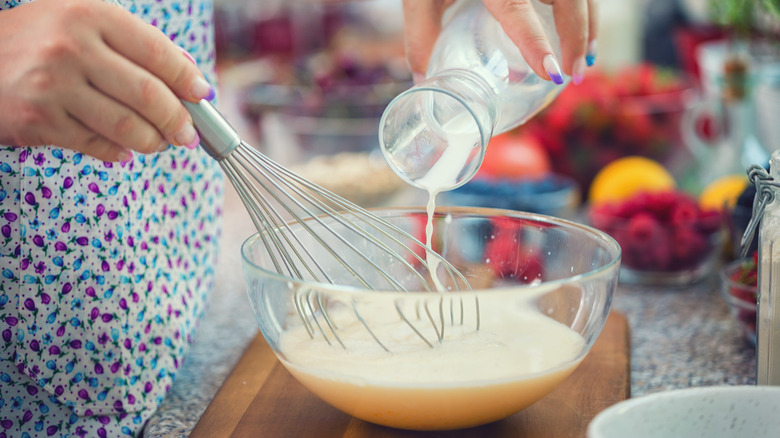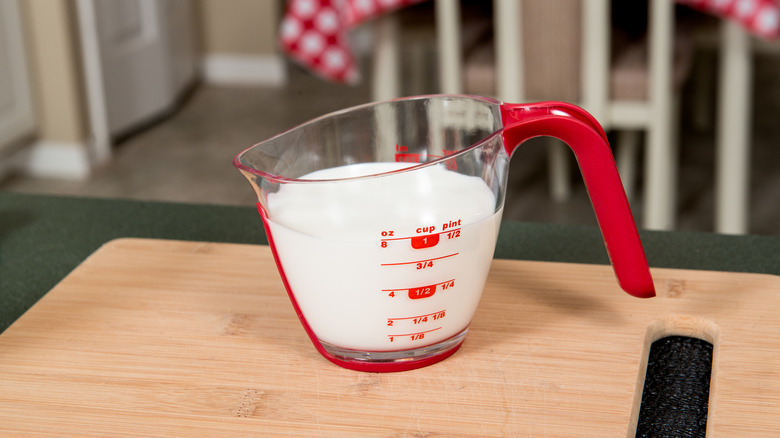The Simple Way To Swap Milk With Half-And-Half
Ever found yourself ready to cook or bake, only to realize you're out of milk? Luckily, if you have half-and-half in your fridge, you're still in good shape. Half-and-half, typically a blend of equal parts milk and cream, can be easily adjusted to mimic the properties of milk, making it a suitable substitute in a pinch. To make half-and-half more like milk, the key is dilution.
If your recipe calls for 1 cup of whole milk, you can mix ½ cup of half-and-half with ½ cup of water. This combination balances the creaminess of half-and-half with the lightness of water, resulting in a mixture that closely resembles the taste and consistency of milk. For a slightly richer alternative, you might want to try a mixture of ¾ cup of half-and-half with ¼ cup of water. This blend is a bit creamier than the first option but still a good stand-in for milk, especially in recipes where the precise texture and fat content of milk are important, like in certain baked goods or sauces.
So, whether you're whipping up a batch of pancakes, baking a cake, or creating a creamy sauce, modifying half-and-half to resemble milk allows you to proceed with your recipe without any major hiccups.
Enhancing your recipes with half-and-half in place of milk
While half-and-half is a great backup for milk, it's also a fantastic ingredient in its own right for enriching the flavor and texture of various dishes. This mixture of milk and cream (which makes half-and-half), with a fat content typically between 10.5 and 18 percent, is thicker than milk but lighter than cream, making it a versatile ingredient in both cooking and baking.
In most recipes, you can directly replace milk with an equal amount of half-and-half. This works especially well in recipes where the richness of dairy is a key component, like in creamy soups, sauces, and custards. For instance, if you're making a soup that calls for 1 cup of milk, simply use 1 cup of half-and-half instead for a richer, more luxurious texture. Half-and-half also works well in baking, though its higher fat content can slightly alter the texture of your baked goods, usually making them more tender and moist. Just be aware that while the difference is generally a positive one, it might slightly change the final product from what you're used to with milk.
However, keep in mind that half-and-half adds more calories and fat than milk. If you're watching your intake, consider using it selectively. In essence, whether you're using half-and-half as an exact substitute for milk or as a key ingredient to enhance a recipe that otherwise uses milk, it's a fantastic addition to your culinary toolkit, capable of enhancing both sweet and savory dishes.

